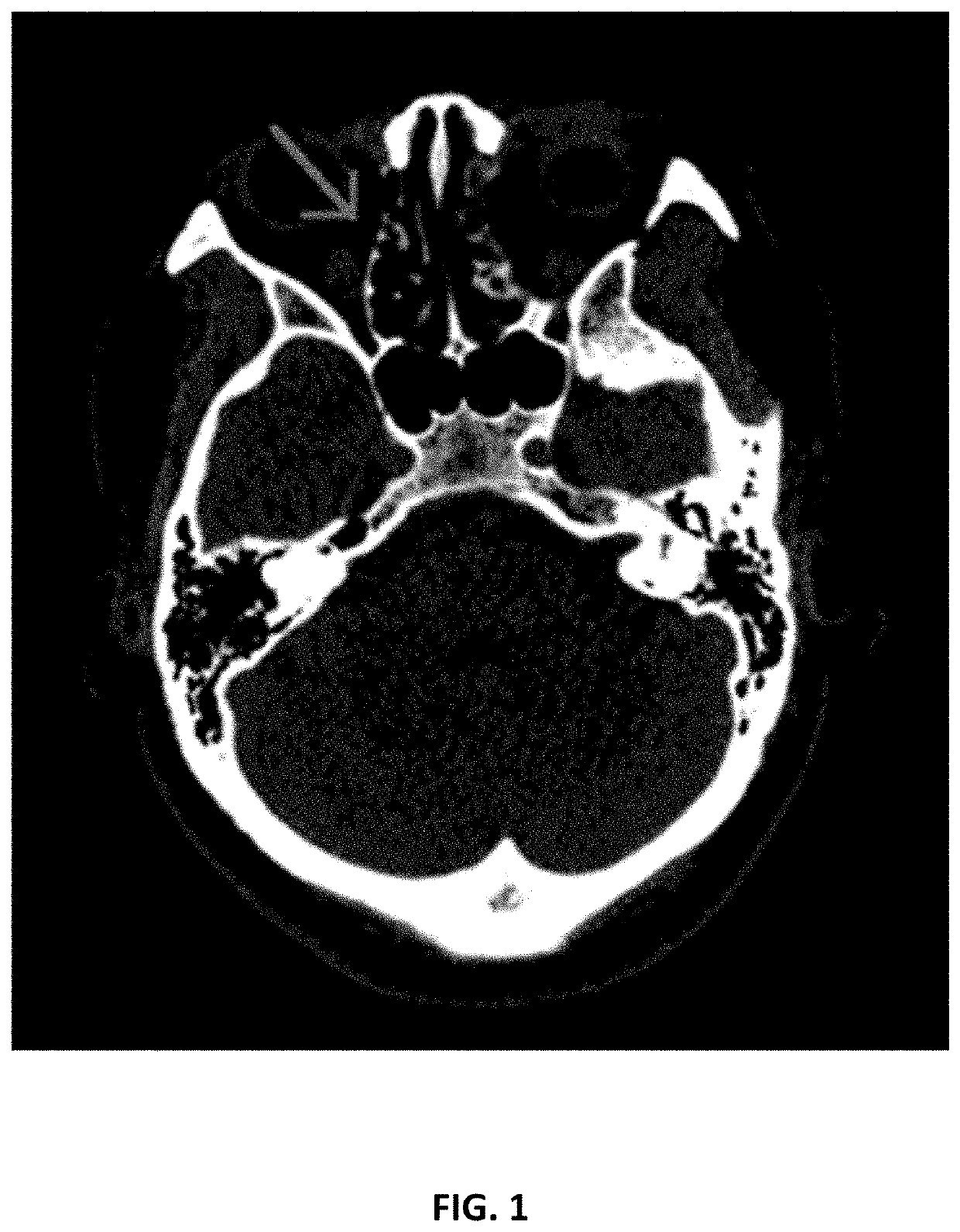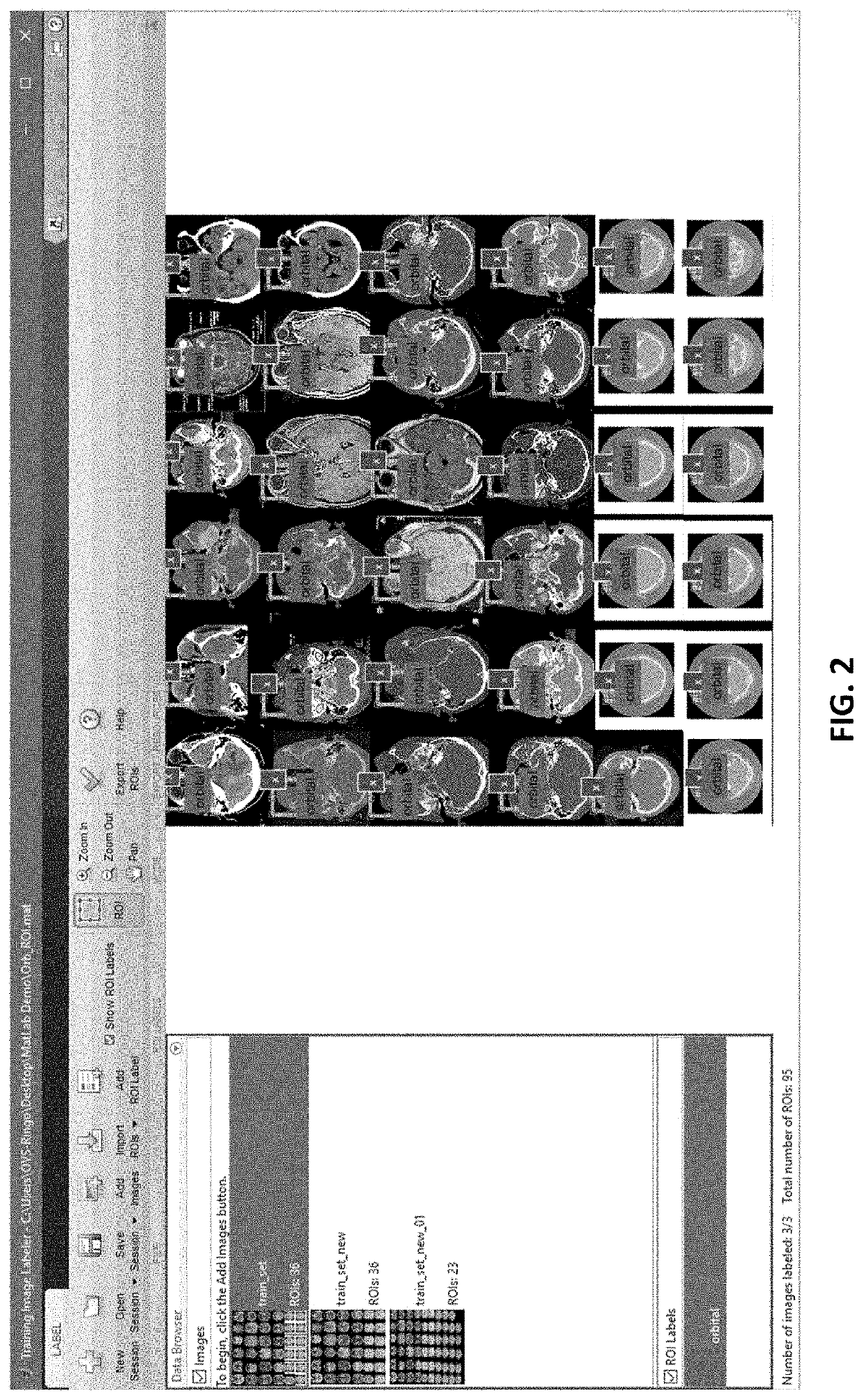Semi-automated imaging reconstruction for orbital fracture repair
a technology of orbital fracture and imaging reconstruction, which is applied in the field of semi-automated imaging reconstruction for orbital fracture repair, can solve the problems of poor signal contrast of orbital bones from adjacent tissues (e.g. paranasal sinuses) in medical images, and the difficulty in identifying and delineating the complete extent of orbital fracture in these images, so as to achieve the effect of enhancing contras
- Summary
- Abstract
- Description
- Claims
- Application Information
AI Technical Summary
Benefits of technology
Problems solved by technology
Method used
Image
Examples
Embodiment Construction
[0019]Various aspects of the present invention relate to the design of patient-specific orbital implants and instruments, and the process involved in production of such implants. In particular, techniques for 3D modelling anatomical models for reconstruction of orbital fracture using image-processing are described herein. The image-processing algorithms are automated as much as possible to shorten the time from clinical imaging to surgical implantation. These processes include automated detection of orbital fracture from medical images (e.g., CT images), identifying and cropping the region of interest (ROI) for further processing, segmentation of the orbital bony ROI using image processing techniques, reconstruction of the 3D model of the pre-fractured orbit from these segmented images, and output of the 3D model data for fabrication of the orbital models and instrument. The 3D model is generated in stereolithographical file for 3D printing of the orbital molds and instruments.
[0020...
PUM
| Property | Measurement | Unit |
|---|---|---|
| thick | aaaaa | aaaaa |
| thick | aaaaa | aaaaa |
| image processing | aaaaa | aaaaa |
Abstract
Description
Claims
Application Information
 Login to View More
Login to View More - R&D
- Intellectual Property
- Life Sciences
- Materials
- Tech Scout
- Unparalleled Data Quality
- Higher Quality Content
- 60% Fewer Hallucinations
Browse by: Latest US Patents, China's latest patents, Technical Efficacy Thesaurus, Application Domain, Technology Topic, Popular Technical Reports.
© 2025 PatSnap. All rights reserved.Legal|Privacy policy|Modern Slavery Act Transparency Statement|Sitemap|About US| Contact US: help@patsnap.com



